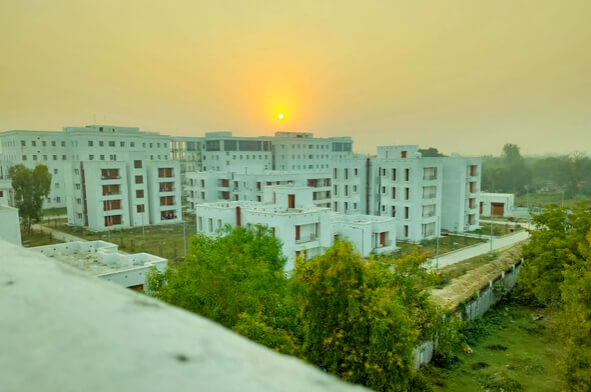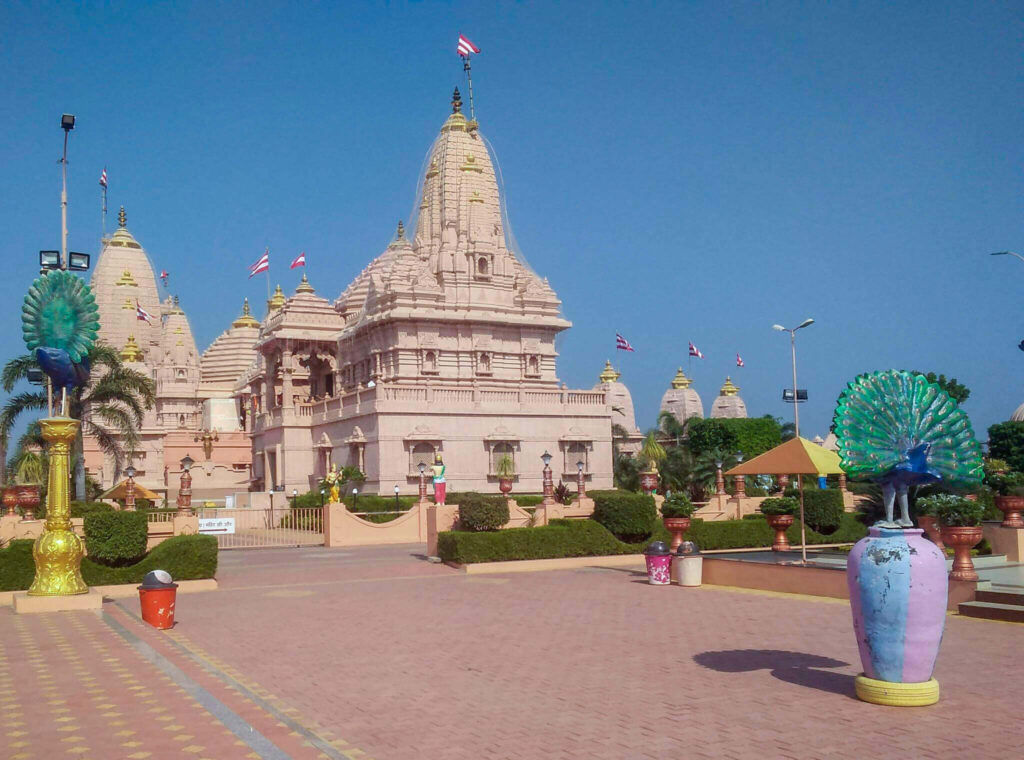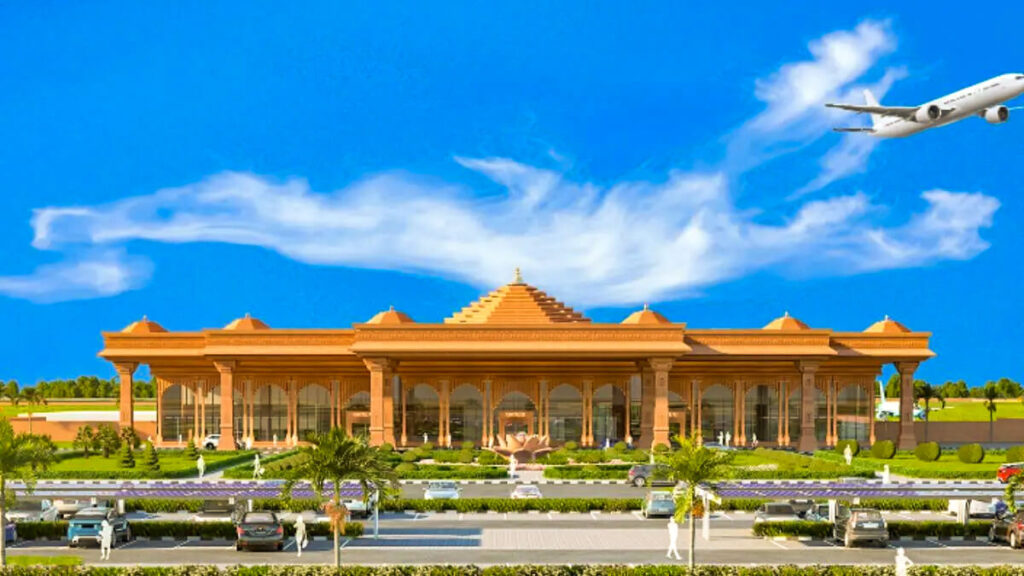To know Ayodhya city from history to controversy is like a mythological thriller journey. The city carries with itself a rich history and endless mythological stories. It holds a pride to be a divine city for the two largest religions of the world, Hindu & Muslim. You can get here number of religious heritages & holy temples. This religiously diverse city is situated on the banks of the sacred Saryu River in the northern state of Uttar Pradesh. Like another popular pilgrimage city Varanasi, Ayodhya has been a Centre point of religious and historical discussions for centuries. But In the 20th century, it became more popular mainly as a disputed site between Hinduism and Islam. Politics, religious diversity and international elements combined to make it a bigger topic of controversy.
Let’s unravelling the layers of Ayodhya’s history to gain a deeper understanding of its significance.
Ancient Ayodhya : From Ram Mandir To Saryu Ghat
Determining the exact age of Ayodhya city is a complex matter, due to its deep association with mythology and ancient texts. According to Hindu traditions and scriptures, Ayodhya’s founding is placed in a time period that predates recorded history. The events of the Ramayana, including the birthplace of Lord Rama and the establishment of Ayodhya as the capital, are considered to have occurred thousands of years ago. The epic Ramayana, attributed to the great sage Valmiki, narrates the life and adventures of Lord Rama, making Ayodhya the heart of the narrative. According to the epic, Ayodhya was founded by the legendary king Manu and later became the capital of the Ikshvaku dynasty, with Lord Rama as one of its great rulers.
Medieval History Of Ayodhya
Great city Ayodhya city’s history takes a prominent turn during the medieval period. Ayodhya became a center for Hindu culture, philosophy, and art. It witnessed the construction of adorable temples, including the world-famous Hanuman Garhi and the Kanak Bhavan. During the Early Medieval Period around 8th-12th centuries, Ayodhya shifted from being a part of the Gupta Empire to smaller regional kingdoms. And during the 10th-12th centuries, The Gahadavala dynasty rose as a powerful dynasty, promoting Vaishnavism and constructing several temples including adorable Vishnu temple in Ayodhya city. Importance of Ayodhya as a Hindu pilgrimage centre began to grow rapidly. Later Medieval Period between 13th-18th centuries, Delhi Sultanate (1206-1526) and Mughal Empire (1526-1857) successively ruled over this region.
And Ayodhya became the capital of the province of Awadh within the Delhi Sultanate and later a Mughal empire. During this later medieval period tolerant of Hindus, Islamic influence grew with construction of mosques and Sufi communities. The Mughal emperor Babur ordered to have constructed a mosque, known as Babri Masjid, in Ayodhya during the 16th century.
Controversy And Legal Battles
Most of the Hindus believe that the Babri Masjid was actually constructed on the ruin place of a Hindu temple that was demolished by Muslim invaders. The latter half of the 20th century saw further escalation in the Ram Janmabhoomi and Babri Masjid controversy. When India became independent in 1947, Many Hindus started to demand the site be returned to their own community. Two years after the partition of India, In 1949, Some of Hindu activists entered the mosque building and placed the statue of Lord Ram and his wife Sita in the main prayer hall. The local Hindu priests kept offering daily worship. However, following a suit by Muslim communities, the courts interfered and the gates to the mosque were locked, leaving the statues inside. Long legal battles went on for decades over possession of the disputed site. Again In 1992, the disputed structure was demolished by the group of some activists, which spread tension across the country. Subsequent legal proceedings and many negotiations aimed at resolving the disputed issue continued for years.
Ayodhya Today
In recent years, Ayodhya has witnessed stunning developments projects at reviving its cultural and religious importance. The construction of the Lord Ram Mandir, has been started after a historic Supreme Court verdict in 2019. Now Ayodhya developing as a cultural heritage and this city moving towards sustainable economic development rapidly. Various initiatives are ongoing like promoting tourism, handicrafts, and local businesses are contributing to the overall prosperity of entire region.
Administration Of Ayodhya

Ayodhya city is a part of northern Indian state of Uttar Pradesh. It holds cultural, religious, and historical importance. A few years ago Ayodhya was part of the Faizabad district in Uttar Pradesh. But In 2018, Ayodhya was established as the headquarters of Ayodhya division, a unit within the state of Uttar Pradesh. The division encompasses five districts: Ayodhya, Ambedkar Nagar, Amethi, Barabanki, and Sultanpur and the Divisional Commissioner leads the administration.
The city of Ayodhya itself has a Nagar Nigam (Municipal Corporation) and responsible for urban infrastructure, sanitation, and other amenities and Mayor leads the Nagar Nigam as well. If we talk about Law and order, it’s maintained by the Uttar Pradesh Police, with a Senior Superintendent of Police (SSP) heading the district police force.
Healthcare & Education

However, This Ancient city is moving towards sustainable development & needs some time to provide adequate world-class infrastructure in Healthcare & Education. Government hospitals like the District Hospital and Ayodhya Medical College & Hospital along with a network of private hospitals and clinics, continuously provide primary and secondary healthcare services to the public. There are several Primary Healthcare Centres (PHCs) and Community Health Centres (CHCs) also operated by the Government within the entire region.
Ayodhya has a network of schools, including government, private and many religious institutions providing education to students at the primary and secondary levels. In higher education, Ayodhya Medical College offers MBBS & other medical degrees and other institutions like Awadh University focusing on research and advanced studies for a vibrant future establishment.
Best Places To Visit In Ayodhya

Ayodhya, a city steeped in history and religious significance, offers a variety of places to visit that cater to both spiritual seekers and history enthusiasts.
Here Are Some Of The Stunning Places To Visit In Ayodhya:
- Ram Janmabhoomi
It’s considered as a heartland of entire Ayodhya region due to the birthplace of Lord Rama. Followers of Hindu religion have a very emotional attachment to this place. this scared site holds immense religious importance. A large number of pilgrims arrive every day for darshan & worship to this place.
- Hanuman Garhi
This temple is dedicated to a great devotee & the most beloved one of Lord Rama, Lord Hanuman. Hanuman Garhi is situated on a high hill and offers awesome views of Ayodhya. The temple is very popular in Ayodhya and an important pilgrimage site for devotees of Lord Hanuman.
- Kanak Bhavan
This beautiful palace is dedicated to Lord Rama and his wife Sita. It is famous for its incredible architecture. According to mythological beliefs, that it was a gift from Lord Rama’s stepmother Kaikeyi to his wife Sita.
- Treta Ke Thakur
This place is located near Ram Janmabhoomi. According to the myth, Treta Ke Thakur is believed to be the spot where Lord Rama With the consent of his gurus and well-wishers, performed the Ashvamedha Yajna. Devotees often visit this site to fulfil spiritual rituals.
- Swarg Dwar
It’s known as ‘Gateway to Heaven, Swarg Dwar is a prominent religious place in Ayodhya. According to the myth, It is believed to be the site where Lord Rama left the Earth to return to his divine residence, Baikunth Dhaam.
- Nageshwarnath Temple
This holy place is dedicated to Hindu god Lord Shiva. The Nageshwarnath Temple is considered one of the oldest temples in entire Ayodhya region. According to beliefs It has been established by Lord Rama himself. This area is a very important religious place for Hindus, especially for those who loves Lord Shiva.
- Tulsi Samadhi Sthal
A memorial dedicated to the famous poet-saint Tulsidas, who wrote the epic poem Ramcharitmanas about Lord Rama & made it popular in every household. Pilgrims pay homage to Tulsidas at this sacred site.
- Sita Ki Rasoi
Related to the life of Lord Ram, this site is believed to be the spot where his wife Sita cooked for Lord Rama. The kitchen is now part of the adorable Kanak Bhavan complex.
- Ramkatha Park
A beautifully panoramic garden near the banks of the Sarayu River. Ramkatha Park very popular place in Ayodhya and developed as an ideal spot for peaceful walks and relaxation.
- Saryu Ghat
Basically, this site is a bank of Saryu River. According the mythological beliefs This ghat is a place where Lord Rama took Jal Samadhi. Devotees come here for ritualistic baths & pay their respect to Lord Ram.
As you explore these historic & sacred sites in Ayodhya. You will not only witness the intense history and mythology associated with the entire Ayodhya region but also experience the spiritual and cultural essence that makes Ayodhya a unique destination for pilgrimage & ritual sites explorers.
How to Reach

Ayodhya is located at a distance of about 135 kilometres from Lucknow, the capital of the Indian state of Uttar Pradesh. Some time ago, Chaudhary Charan Singh International Airport in Lucknow was the only nearest airport to Ayodhya. But now Maharishi Valmiki International Airport Ayodhya Dham is ready & well connected with the national capital of India. If you want to reach via train, It’s also the best option. Ayodhya Dham station is situated within the city and various popular trains are running for Ayodhya Dham Junction like Vande Bharat Express, Ayodhya Express (14206), Saryu Yamuna Express (14650) and Kaifiyat SF SPL (02226).
Best Time To Visit
Winter
The winter months October to March, experience cool and comfortable. Temperature ranges from around 8°C to 25°C and It’s considered the best time to visit Ayodhya. The weather is dry, and the days are sunny, making it ideal for exploring the city and its historical sites.
Summer
Summer months like April to June in Ayodhya can be hot, with temperatures ranging from 25°C to 45°C & making outdoor activities uncomfortable. It’s necessary to carry sun protection and stay hydrated if you plan to visit during this period of season.
Monsoon
In monsoon months like July to September, temperatures range from 25°C to 35°C. Ayodhya faces heavy monsoon rains during these months. While the landscape becomes lush and green, heavy rainfall may disrupt travel plans.
Conclusion
Ayodhya’s history is full of mythology, religion, and political controversies. But now this city has decided to leave behind many controversies and move ahead with its rich history. Adorable Temples, World-Class Road infrastructure, good Health facility & other amenities are rapidly developing. Ayodhya continues to be a symbol of spirituality, inviting people from all walks of life to explore its rich history and participate in the ongoing cultural revival.





Leave a reply